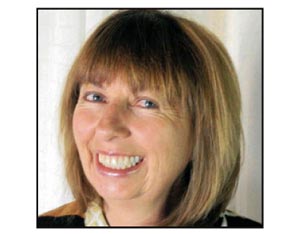The 39 resolutions that are up for discussion at the Democratic Alliance (DA)’s 5th Federal Congress this weekend tell the story of a political party as a vehicle stalled at some crossroads. It has vision and knows the desired direction, but there are doubts where the vehicle is the one that will progress to the desired destination.
These are the resolutions that DA structures, ranging from branches to provinces and federal, submitted for deliberation at the Birchwood congress. The congress will also elect (or confirm the mono-nominations of) the party leader, the federal congress chairperson and three deputy chairpersons, along with the federal council chair and deputy chair, the chair of the federal legal commission, and chair of the federal finance committee.
In the interim this party-vehicle does what it can. The DA is limited by the fact that it has ideas, but can only implement them in the Western Cape provincial government, or in the 29 municipalities where it governs, mostly in opposition party alliances. In the 2011 local elections in won the majority in 14 municipalities. The implementation of its ideas is obviously also subject to national legislation and public funds.
Its proposed resolutions acknowledge the work of its public representatives. The resolutions contain proposals of further recognising and empowering them. The implementation of many of the proposals will fall on their shoulders.
The main thrust of the DA’s resolutions to advance policy alternatives is to focus on details, on known areas of problematic African National Congress (ANC) governance. It pays great attention to legislative oversight. One proposal is that it will introduce motions ‘in all ANC-controlled metros and municipalities that all tender committees be open to the public’. It also calls on DA formations ‘to seek the amendment of relevant national, provincial and municipal legislation so as to ensure that all Public Accounts Committees are chaired by a member of an opposition party chosen by members of the opposition parties’. The resolutions follow through with imploring the party to monitor adherence to the Public Finance Management Act (PFMA) and the Municipal Finance Management Act (MFMA) and to institute criminal charges where appropriate, ‘especially in cases where reports clearly indicate financial mismanagement on the part of the accounting office’. The DA also keeps on urging for the release of the long-awaited and often-promised Ministerial Handbook.
“In opposition party mode it mostly proposes dipstick interventions”
Eighteen of the 39 resolutions address substantive policy issues – and job creation is central. The DA remains on the track of its Plan for Growth and Jobs (now pushing for implementation). Jobs need to be created through, for example, infrastructure development, and economic empowerment must happen through job creation and skills development. It is also steadfast in its insistence on the implementation of the youth wage subsidy. On this issue, it urges President Jacob Zuma to intervene in the ‘ideological standoff’ between the tripartite alliance members.
Further demonstrations of the DA anchoring its federal congress resolutions in current political practice and problems is the repeat proposal to privatise the state owned enterprises (SOEs) where appropriate and liquidate those for which privatisation is not possible. In its own domains of governance, it will rationalise state involvement.
The rest of its policy proposals are scattered across the public policy areas. In opposition party mode it mostly proposes dipstick interventions, on themes that can mobilise possible supporters and help focus opposition party campaigns. These include:
• Education: Not specified in any further detail – innovative and pragmatic resolutions of pressing problems; ensuring that text books get delivered.• Land reform: Property rights for all South Africans; replacement of the Communal Land Rights Act.• Informal settlements: Upgrading, including access to water, sanitation, electricity and title deeds for the ‘forgotten people’ in these settlements.• Recycling: If this resolution is adopted, there will be no more bottled water at DA events; refundable deposits on glass liquor bottles.• Transport: The Maloto rail corridor needs to be constructed Between KwaNdebele and Pretoria.• Hydraulic fracturing: Existing legislation needs to be upheld – fracturing is a production process that is not to be applied in the phase of exploration.• Rhino poaching: All-around vigilance and strict sentencing.• Water scarcity: Promote water waste treatment in municipalities.
The resolutions are strong on building the character of the still emerging DA, trying to push members onto more progressive plains. Resolutions argue for the DA and members to embrace South Africa’s diversity – instead of just practising toleration. There needs to be ‘unity in diversity’. Unity should be built through shared history, with the resolution playing on constraint in renaming places and roads. The DA resolutions stress the need to have full multilingualism in party documents, and on its website. In regions all of the regionally pertinent languages need to be practiced in DA circles and literature.
Another resolution urges that reconciliation needs economic redress. Inequality is a structural inhibitor of reconciliation.The DA’s own ‘cadre induction’ issues come to the fore. New recruits need to be trained in its liberal-democratic values, especially those on the branch and constituency committees. An information sheet on the party needs to accompany membership application forms. There is a proposal for a certificate course and examination for all public representatives and candidates.
Compositely these resolutions tell a modest story of an opposition party that has limited options in taking over and making their own proposals work any time soon, if at all. Even on the substantive policy terrain, the DA targets small-scale interventions, yet ones that will help sustain existing DA campaigns that highlight ANC failures. Only time will tell if this type of piecemeal opposition project will have the gravitas to gradually but systematically grow and capture significant chunks of ANC territory – or whether party political realignment in South African politics is driven by grander-scale splits and new formations.
– Susan Booysen, Professor in Wits University’s Graduate School of Public & Development Management (P&DM).
– By ANALYSIS: Susan Booysen


